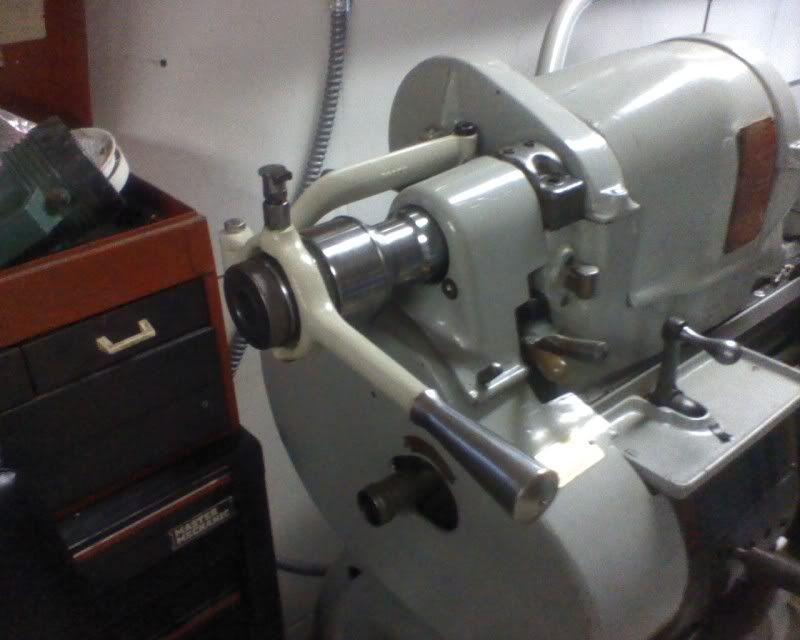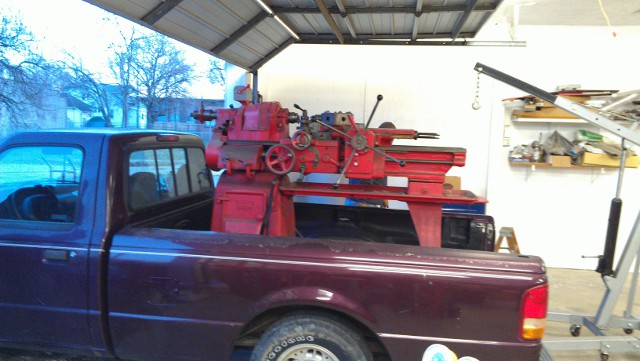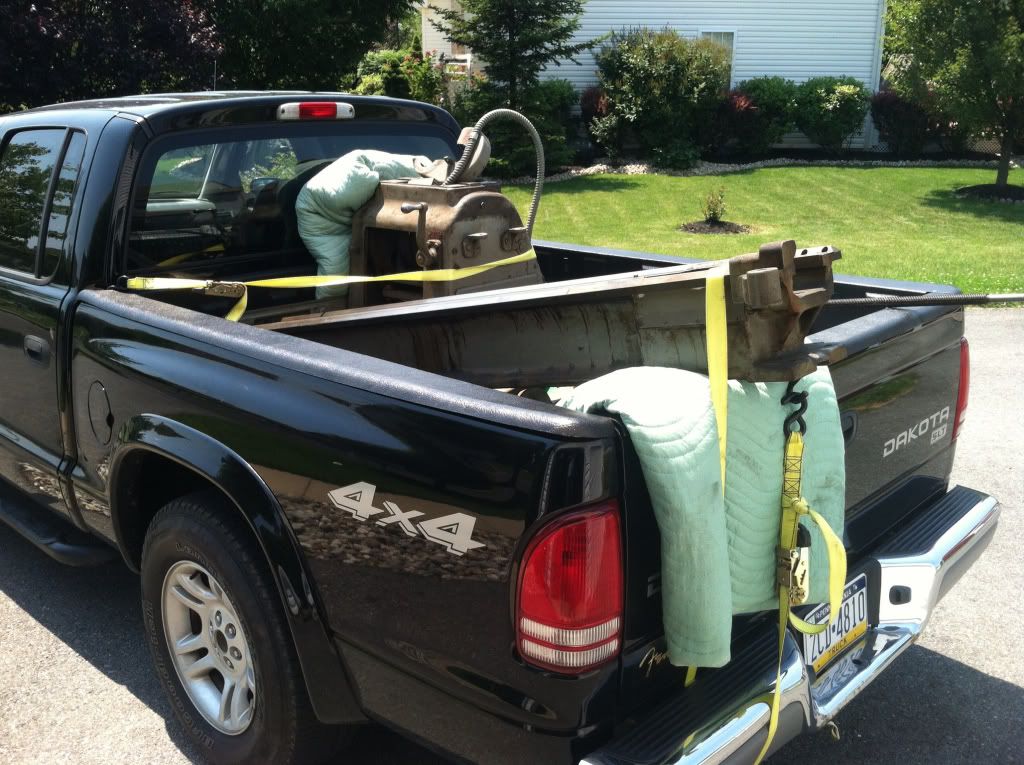Howdy Creex.
I bought a lightly used a South Bend cl145b which is the 13" with a 72" bed length. I have had this machine for about 13 years now. My machine, according the serial number, was produced between 1950 and 1955. She has the double tumbler gearbox. A substantial number of useful tools came with her such as a sb milling attachment,
a steady, a follow, a taper attachment, two collet racks, a four jaw 6" independant skinner chuck, a 10" imported 4 jaw independant, a three jaw scrolling chuck of English origin, and several other goodies. The spindle bore is close to 1 1/2", probably 1 3/8 or 1 7/16". It has a manual draw bar type collet arrangment with full set of 5C type collets of mixed vintage, some SB and others imported. I have learned from other more professional people on this forum that the 5C type collet, as well as other similarly designed collets, are strong, true and parrallel, but only at their nominal size, whereas an ER type collet has interlayered metal and rubber strati which enable it to remain parallel over its range of compression in the collet chuck and therefore the ER collet setup gives you infinitessimal size capabilities compared to the standard discreet sizes of 5C collets. Just remember that if you choose the drawbar arrangment, dont forget to put the spindle threaded nut on first since it is needed to release the collet from the taper it sits in. I am a plumber by trade and I can't over-praise the versatility of this machine. I have gotten out of some pretty ugly situations over the years thanks to this machine.
Overall, despite the fact that I am not a machinist, I can say with unequivocal certainty the SB 13 has a lovely mixture of rugged capability and reliable precision and there are scores of people and internet resources to consult regarding its use and repair. By the way, I have a truck bay at the rear of my shop and I hired a trucker with a flatbed truck to deliver the lathe which was only a mile away. I think I paid him $100 at the time, but still is took three of us with a come-along and a 2 ton chain block slung from the roof trusses to slide it off the the truck and into its final spot. I think it weighs btween 1000 and 1500 lbs.







